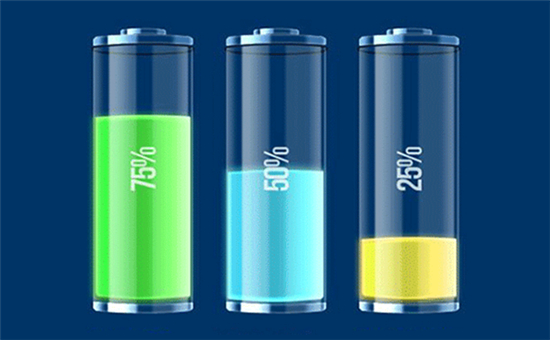What Is Good Internal Resistance Of LiPo Battery
May 09, 2020 Pageview:9570
The researchers and scientists created the lithium polymer batteries to overcome the limitation of lithium-ion batteries. However, these batteries have their own set of limitations. The LiPo batteries suffer from voltage sag and some other properties during the discharge cycle that can be explained by Ohm's law. Hence, the only possible explanation for such behavior of the lithium polymer battery pack is the internal resistance present in it.
So, today, we will explore what role internal resistance plays in the LiPo battery technology and its optimal levels. Let's begin.
How Do You Find The Internal Resistance Of A LiPo Battery?
Before we learn how to find the IR in a LiPo battery, let's take a look at the definition of the term. To understand what is internal resistance, take a look at what Ohm's law states, "a circuit with load resistance R is connected to a voltage source with voltage V, then the amount of current that flows in the circuit is calculated by dividing the voltage by resistance."
However, if you take a look at the real-world examples, the statement never really holds up. There is a specific amount of current loss due to various factors like heat or wire resistance itself. And internal resistance or impedance is the property given to this opposition of the flow of current inside the circuit that creates the difference between input and output. In simple words, internal resistance creates a difference between the voltage output and the no-load voltage, and heat is produced as a result.
It is a property that exists in all substances that conduct electricity. Hence, you can never get rid of the internal resistance entirely. And the bad thing is that this property affects the efficiency of the battery pack preventing the complete flow of power. The higher amount of IR means that the battery pack will be less efficient and provide less current.
To calculate the total internal resistance of a battery pack, you can add the individual cell resistance numbers together. According to Ohm's law, the internal resistance of a cell is calculated as,
IR = (Voltage- Potential Difference)/ Current
The formula will determine the amount of internal resistance present in the circuit. However, a consumer won’t have to struggle that much to calculate the IR. Most battery packs list down the value of IR per cell on the packaging. Furthermore, there are advanced computerized chargers available in the market that will help the consumer to measure the IR of each cell they are using.
As a general rule, the IR must be as low as possible to make sure that the circuit can provide enough current to the device. But as the battery pack ages, the internal resistance increases significantly. The voltage drop becomes higher, and the battery starts to heat up until, eventually, it dies. That's why it is often recommended that you must keep the lithium polymer batteries and the other battery types as well in ideal conditions. Exposing the battery chemistry to extreme conditions affects the system and increases the IR within causing the battery to fail earlier than expected.
When Do You Retire A LiPo Battery?
Now that we understand how internal resistance works, knowing when to retire a battery is the next question. To do this, you first need to know the average lifecycle of the battery which is up to 400 to 500 cycles.
The lifespan of LiPo batteries depends on other factors as well such as temperature, frequent use, physical damage, and some others. The amount of abuse you put on your batteries, the sooner they will go out. Still, the typical lifecycle of a LiPo battery of 500 cycles is around 12 to 18 months. With good care, you can make these batteries last for up to 2 years as well. But, we recommend that you dispose of these batteries once they are three years old.
Along with this, as you purchase a lithium polymer battery; take the IR reading right away. As the battery ages, you can keep measuring the amount of IR increasing in the system. But make sure that you take the readings at the same temperature. The amount of IR also increases rapidly if the battery often experiences over-discharging, over-charging, overheats, and extended discharge rate for a longer period.
When you have timed reading of IR, the chart will serve as a reference to tell you that it is time to retire the LiPo battery.
How Much LiPo Internal Resistance Is OK?
If someone asks you this question, then there is no right answer. The lower amount of internal resistance depends on the individual circuit. Suppose you have a typical battery pack of 1300 to 1500 mAh capacity. For that much capacity, the internal resistance of the circuit should be lower than 10 to 15 m Ohm. Once the battery starts to get old, the internal resistance will rise to 15 to 20 m Ohm. And once the level goes above 20 m Ohm, it is time that you retire the battery and replaces it with another one.
So, if you ever have to ask is your battery safe for use, then you must replace it as soon as possible. And even if you don’t have the means to measure the internal resistance specifically, you will experience a change of performance in the battery that is a sign that the battery chemistry is becoming inefficient. Symptoms like battery not being able to hold the charge, sudden voltage drops, voltage sag, and reduced flight time also signify that the chemistry is affected permanently.
The most alarming sign of battery damage you will notice is that the battery will start to heat up. Even when the battery is charging, make sure that it is not getting hot. Without even realizing, the internal resistance causes enough mess already. And what's even worse is that most scientists argue that even with the formulas, it is complicated to measure the exact amount as it might differ according to circumstances. So, take care of your LiPo battery as much as you can.
- Prev Article: What Is Lithium Polymer Battery-Advantages And Applications
- Next Article: Do Cell Phones Have Lithium Batteries-Types and Safety
Leave Message
Hottest Categories
-
Hottest Industry News
-
Latest Industry News












